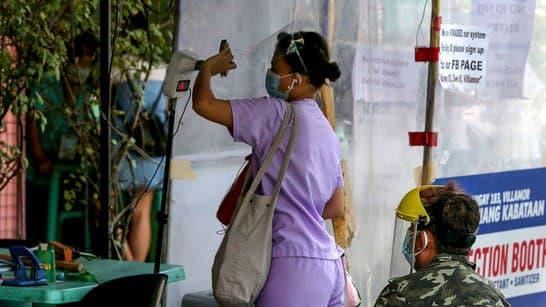MANILA, March 12 (Xinhua) -- The Philippines' Department of Health (DOH) reported on Friday 4,578 new confirmed cases of COVID-19, the highest daily number in nearly six months, pushing the Southeast Asian country's total tally to 611,618.
The record daily tally was compared to 4,699 cases reported on Sept. 14 last year.
The coronavirus death toll rose to 12,694 after 87 more patients died from the viral disease, the DOH said. It added that 272 more patients recovered, raising the total number of recoveries to 546,912.
Due to the surge in COVID-19 infections, Metro Manila will impose on Monday uniformed curfew hours from 10:00 p.m. to 5:00 a.m. local time to limit people's mobility.
Presidential spokesperson Harry Roque said the government will deploy police in Metro Manila to ensure that people comply with the strict quarantine rules.
"It is a national policy now," Roque said in a televised press conference. "It is a directive issued by the Department of Interior and Local Government which must be implemented by the Philippine National Police nationwide, particularly in areas where there is noted increase in the number of COVID-19 cases."
The DOH blamed the spike of cases in Metro Manila and other regions on people's non-compliance with the minimum health standards and the imported more infectious coronavirus variants found in Britain and South Africa.
"The spike of cases is aggravated by the variants that we have now. These variants are driving the infections," Health Undersecretary Maria Rosario Vergeire said in an online briefing.
Defense Secretary Delfin Lorenzana earlier confirmed that local government units had requested soldiers and police deployment to help them implement social distancing and wearing of face covering.
Testing czar Vince Dizon said the spike of cases mostly comes from Metro Manila, home to about 14 million people.
"The cases are high, but the level is manageable," he said, adding, "The majority of the cases are mild or asymptomatic."
He also said most of the COVID-19 patients are sent to isolation facilities instead of hospitals.
